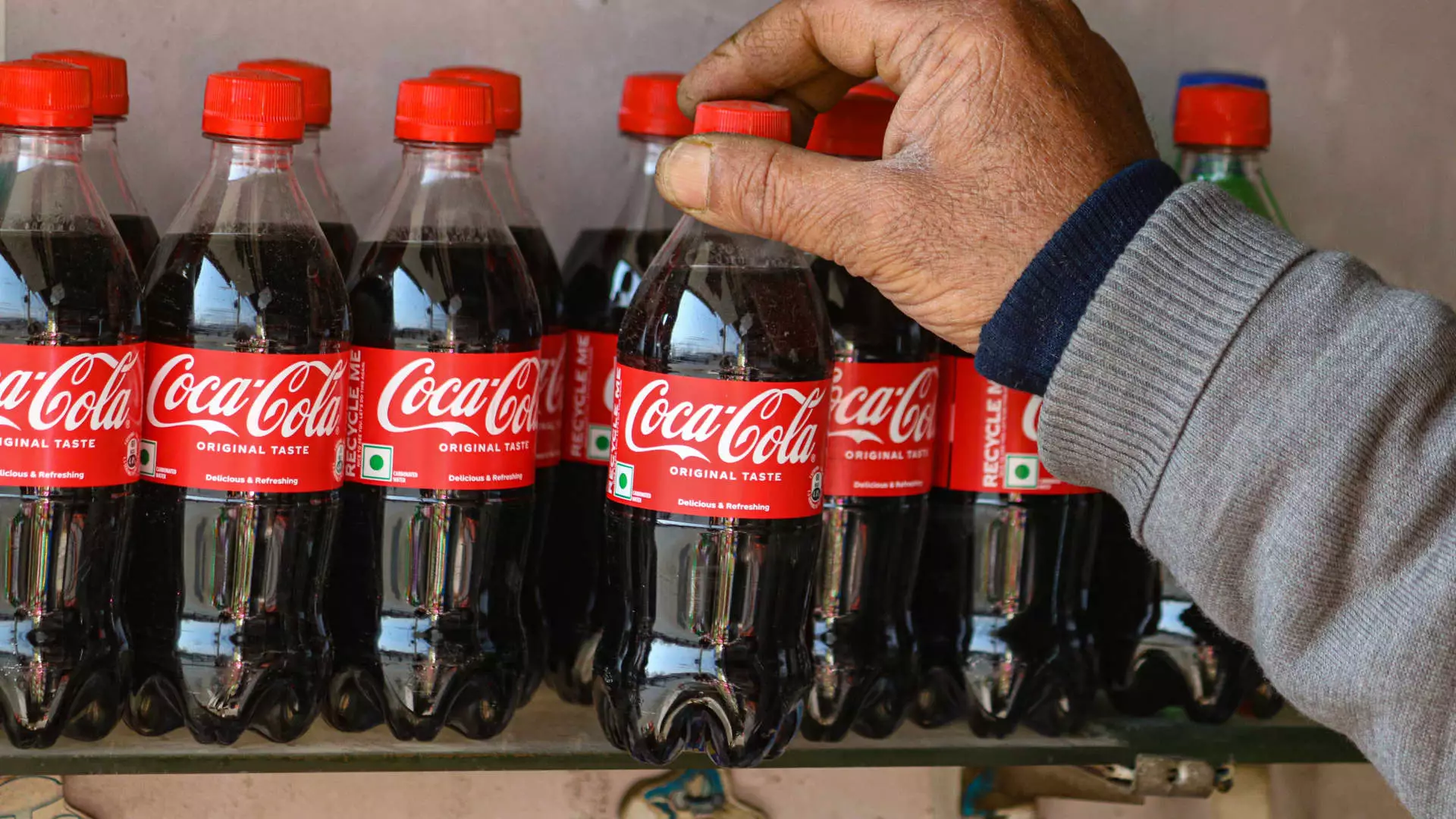In an era where global trade tensions can significantly affect business operations, Coca-Cola’s recent announcement illustrates a proactive response to potential shifts in the economic landscape. CEO James Quincey highlighted a strategic pivot from aluminum to plastic packaging in light of President Trump’s proposed tariffs on aluminum and steel imports. This move not only signifies Coca-Cola’s adaptability but also raises critical questions regarding sustainability, consumer demand, and corporate responsibility.
Quincey pointed out that should the price of aluminum rise due to tariffs, Coca-Cola has the option to increase its reliance on PET (polyethylene terephthalate) plastic bottles as a more cost-efficient alternative. His remarks during the earnings conference call reveal a nuanced understanding of market dynamics; if one packaging type becomes financially burdensome, the company can leverage other materials to maintain consumer affordability. This ability to navigate through cost fluctuations showcases Coca-Cola’s operational flexibility. However, while the change may seem pragmatic in the short term, it begs a deeper examination of long-term implications—specifically, the potential compromise of sustainability efforts.
Coca-Cola’s recent shift towards plastic, despite acknowledging aluminum’s recyclability, echoes a growing concern about the environmental ramifications of single-use plastics. Though Quincey reassured investors that the impact of the higher aluminum costs would be manageable for the multimillion-dollar company, it is essential to consider Coca-Cola’s reputation regarding environmental responsibility. The company has faced extensive criticism, including being labeled by Greenpeace as the world’s worst polluter for its plastic waste. Transitioning packaging materials may ease short-term financial burdens, but it could further entrench a troubling legacy of plastic pollution if mismanaged.
Moreover, the company’s slashed sustainability goals—now aiming for only 35% to 40% recycled content in packaging by 2035—represent a regression from their prior target of 50% by 2030. This recalibration raises eyebrows and invites skepticism about Coca-Cola’s commitment to reducing its environmental footprint. As consumers become increasingly eco-conscious, the repercussions of diluting sustainability initiatives could provoke backlash against a brand that, until recently, had emphasized its efforts toward environmental stewardship.
Recycling dynamics also play a pivotal role in this discussion. While Quincey asserts that moving towards PET bottles can mitigate tariff impacts, it is crucial to note that the recycling rates for PET lag significantly behind those of aluminum. With only about 29% of PET bottles and jars being recycled in 2018, compared to over 50% for aluminum cans, the overall environmental benefits of this packaging shift come into question. Coca-Cola must reconcile its short-term profitability with environmental accountability to safeguard its corporate image and align with growing consumer expectations for sustainable practices.
Beyond the immediate implications of tariffs and packaging choices, Coca-Cola’s strategic approach must factor in the evolving landscape of consumer preferences. As society increasingly advocates for environmentally responsible practices, the beverage titan cannot rely merely on short-term fixes to navigate economic challenges. Emphasizing innovation in sustainable packaging solutions, exploring biodegradable alternatives, and fostering strong recycling programs will be critical in positioning Coca-Cola as a leader in sustainability.
Additionally, the company’s exploration of domestic sources for aluminum, alongside potential price adjustments for consumers, presents an opportunity not only to maintain profitability but also to enhance corporate responsibility. Building a robust narrative around sustainable sourcing and environmental stewardship could allow Coca-Cola to align business interests with community and ecological needs, ultimately benefiting both shareholders and society.
Coca-Cola’s strategic pivot from aluminum to plastic in response to potential tariffs signifies the complex balancing act between maintaining market competitiveness and addressing sustainability concerns. While operational flexibility is essential, the company must also prioritize long-term sustainability and social responsibility to remain relevant in a world increasingly defined by environmental challenges. The decisions made today will shape Coca-Cola’s legacy; therefore, a thoughtful, forward-looking approach is crucial not only for financial success but also for preserving the planet for future generations.

Leave a Reply